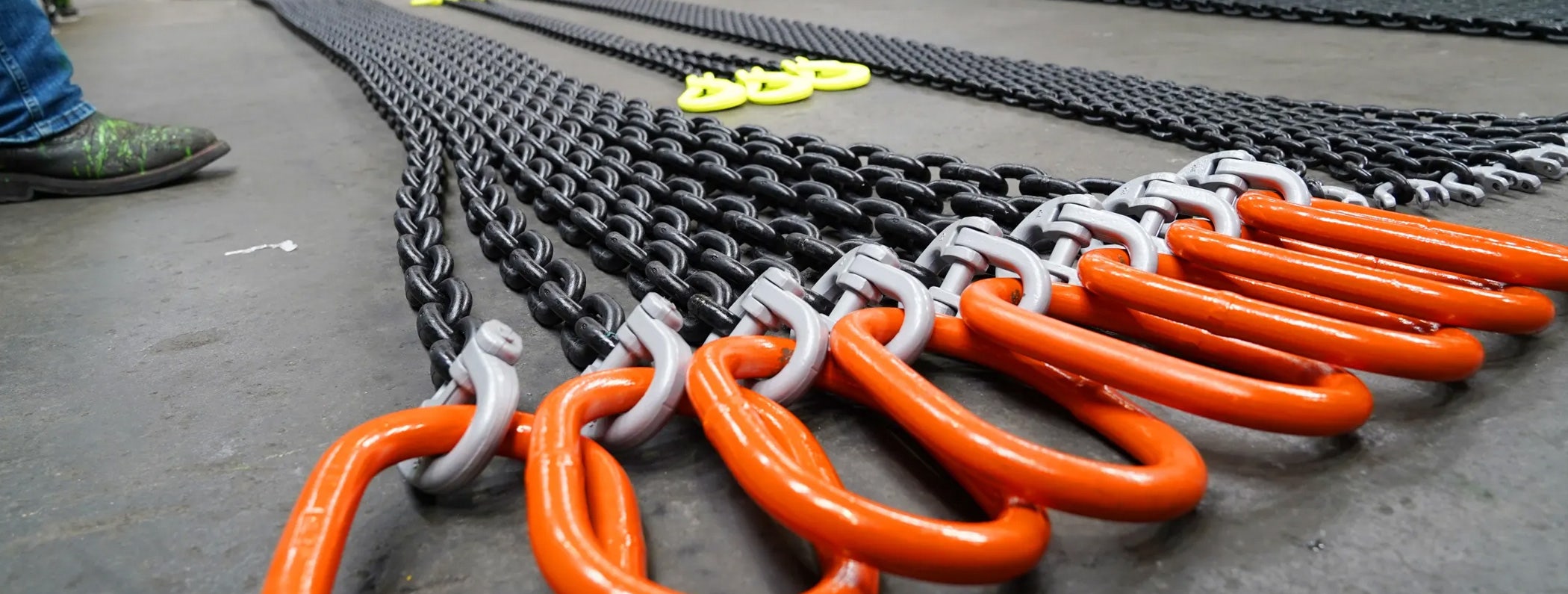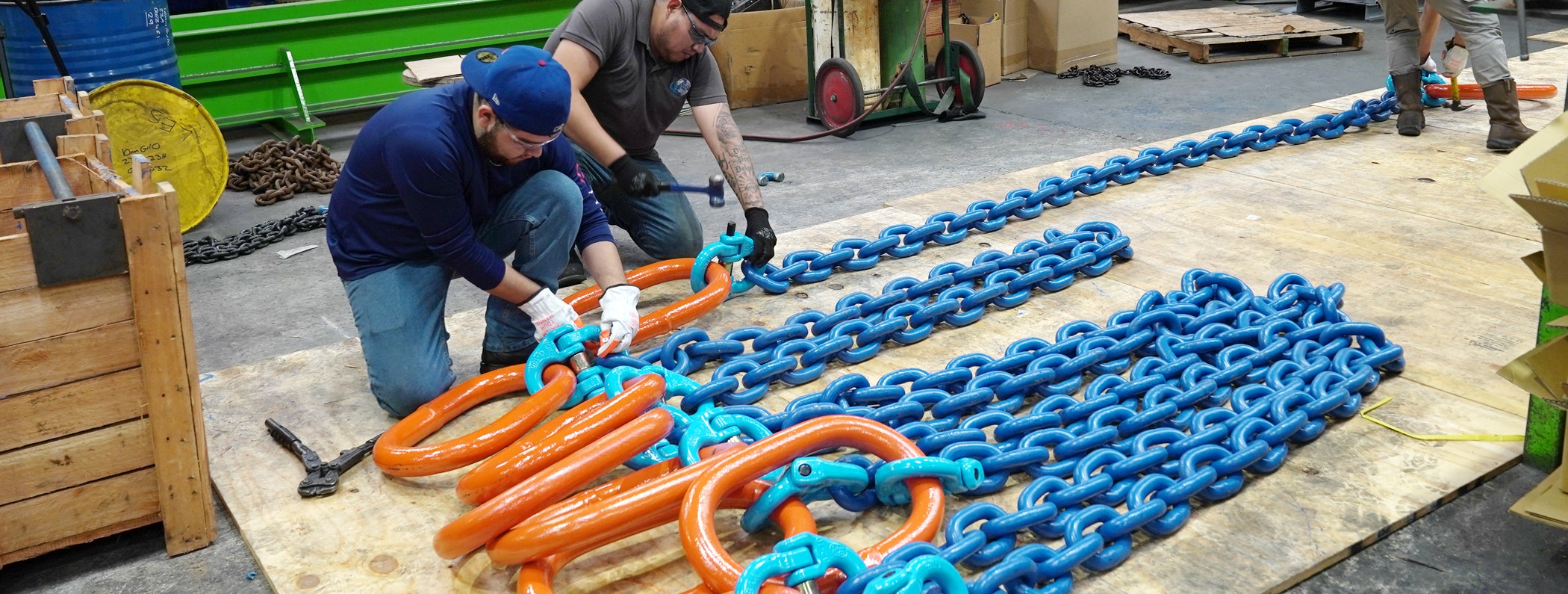Why Should You OPT for Rigging Training for a Successful Career as a Rigger?
Rigging training is integral for pursuing a career as a rigger. The training program trains applicants so that they can securely attach a load to a crane on a job site. The training also helps in building a thorough understanding of using the rigging equipment so that the safety of the workers using it is never compromised.
The training program covers all the applicable OSHA (Occupational Safety and Health Administration) and ASME (American Society of Mechanical Engineering) standards and makes the candidate proficient in dealing with rigging loads. They learn about:
- Identifying and managing risk
- Proper rigging techniques
- Planning the lift
- Taking proper precautions during crane operations
- Inspecting rigging hardware
- Taking proper preventive measures when using lifting slings
- Conducting a periodic inspection of the slings
- Controlling the load while it’s off the ground
- Using below-the-hook lifting devices
- Instructing the crane operators about lifting operations
- Ensuring workers’ safety by identifying potential hazards when working at heights
This post will shed light on what does a rigger do, how to become a rigger, and why it’s essential for businesses to only employ certified riggers. The aim is to help the candidates get a clear idea of the prerequisites of becoming a qualified rigger.
1. Importance of Riggers and Rigging
Cranes play an integral role in every construction site. However, they also pose a significant threat to both men and load while being deployed for lifting operations. They might cause injuries to workers or damage the load if proper rigging techniques are not followed.
Riggers are pivotal in ensuring the safety of the workers, as well as load. During the crane operation, they ensure that the load has the necessary support and stability from the cables while it’s off the ground.
Here, we have provided answers to some of the frequently asked questions concerning rigger and rigging.
a. What Is the Role of a Rigger?
Riggers are responsible for attaching heavy loads (meant to be transported from one location to another at a job site) onto a crane using ropes, pulleys, heavy chains, cables, and straps.
During the training, aspirants are taught about various equipment that can be used for attaching an object and the maximum load a particular crane can lift. They are also taught about a load’s center of gravity, which helps in determining its balance, stability, and mobility during transportation.
Further, the load riggers play a crucial role in assessing the load’s weight, balance, and size. They help set up pulleys and cable systems to ensure workers’ safety while the crane is in operation.
As the demands of the worksites continue to evolve, more extensive and heavier loads are required to be transported. The rigger team works in tandem with crane operators to ensure the safety of the workers when a crane is in operation.
Needless to say, without an experienced rigger in the team, a worksite can become a danger zone for other workers in no time.
b. What Is Rigging Safety?
The safety of the staff must be the top priority whenever there’s a need to transport heavy loads and machinery. Inappropriate rigging of loads can cause unintended falls of the load, leading to property damage or severe injuries to the worker.
Rigging safety refers to the precautions that the authorities must take at a job site to minimize the risk of any unforeseen incident during a crane operation. The precautions include training of staff, having adequate protective equipment onboard, environmental risk assessment, proper communication across the teams, and emergency evacuation plans.
Rigging safety also comprises a periodic assessment of the equipment for ensuring that they comply with the ASME standards and are safe to use. ASME standards imply that the equipment can operate at their peak without degrading workplace safety.
c. Why Should You Become a Qualified Rigger?
According to OSHA Regulations (1926.1404(r)(1) and 1926.1425(c), employers must employ only qualified riggers at a job site. They must ensure that the rigger is trained in conducting hosting activities for assembly and disassembly work and hooking or unhooking a load to a crane.
OSHA also states that a qualified rigger is an individual with a recognized degree or certificate in rigging and hands-on experience in dealing with rigging loads. A certification in rigging makes an individual qualified for applying to rigging jobs with a competitive pay scale.
d. How to Become a Certified Rigger?
To become a certified rigger, candidates must complete an accredited training program. During the training, they are taught about the roles and responsibilities of a rigger, hand signals, voice-activated and audible signals, crane operations, fundamentals of rigging, load handling, and the environmental factors involved during rigging.
After the completion of the training, aspirants must successfully pass a written and practical exam conducted by an NCCCO (National Commission for the Certification of Crane Operators) accredited organization to become a certified rigger.
A rigger certification affirms that the candidate can successfully perform the duties that a trained rigger is expected to do at a job site.
2. Things You Will Learn through Rigging Training
The rigger training program makes aspiring riggers aware of proper rigging practices so that they meet the OSHA standards required by a qulified rigger.
At Holloway Houston, INC, we aim to empower aspiring riggers with all the skills necessary to pursue a successful career in the rigging industry.
Our rigging training program aims to strengthen the fundamentals of rigging and provides aspirants with a clear understanding of how to select, inspect, and use rigging gear. Here’s what you’ll learn:
a. How to Use Various Equipment
During the training program, you’ll learn to operate different types of cranes and rigging loads so that you have greater chances of employment in the construction industry. Additionally, you’ll learn to use all the necessary equipment required during a crane operation in a safe manner, keeping threats of injuries at bay. Some of the skills that you’ll learn include:
- Setting up cranes
- Using a variety of attachments
- Rigging and signaling
- Different lifting techniques at a construction site
b. Using the Equipment Safely
Working at heights can be risky. You should, therefore, have an understanding of the safety precautions you need to take as a rigger when working onsite. You should also know about the precautions to take when working around rigged structures.
A significant part of your rigging training will include making you aware of safety nets and perimeter safety screens. The training will also enable you to understand the procedures you need to adopt for different rigging jobs to ensure the overall safety of all workers at a job site.
c. How a Job Site Actually Operates
Thorough knowledge of how a job site operates is integral for any certified rigger. A major part of the training includes working in a training field, similar to an actual job site.
This will allow you to experience your future work environment and what to expect at a real job site.
However, the environment at the training site is more controlled, and you can seek help from the instructors whenever required.
d. Understanding Inspection Requirements of the Equipment
Rigging training will make you efficient in using different kinds of rigging equipment and performing periodic checks to ensure whether all machines are performing at their peak. The most common issues with rigging equipment are rope fraying, bending or warping of hooks, and wear and tear.
Having the skills to detect the issues with the equipment before they cause any damage guarantees workers’ safety. You’ll also be able to determine whether the equipment abides by ASME standards and can be used safely. If it doesn’t meet the necessary standards, it has to be replaced.
The ASME B30 safety standard accredits the safety standard for cableways, cranes, derricks, hoists, hooks, jacks, and sling used during a crane operation.
e. Communicating Effectively
Maintaining clear communication with the various onsite teams is necessary to avoid unforeseen incidents. Often, crane operators need to be instructed from outside their line of sight. An individual can do this efficiently only after the successful completion of rigger training.
The training will prepare you to give directions to the crane operators via a whistle or radio. Mastering this skill significantly reduces the chances of accidents caused due to miscommunication.
f. Upskilling Opportunities
Candidates can opt for three levels of rigging training: basic, intermediate, and advanced. You can move up through the levels as you expand your knowledge by learning new skills.
You may also opt to complete Certificate III in Civil Construction instead of completing the basic, intermediate, and advanced licenses individually. The Certificate III training program includes advanced level rigging training and basic construction training, which will provide you with the opportunity to further enhance your skillset.
3. OSHA Requirements for Qualified Rigger
OSHA is responsible for issuing guidelines concerning safety standards that each state in the U.S must adopt. They are also responsible for taking action if they find a job site to be unsafe.
OSHA has strict specifications regarding hoisting and has clearly mentioned that only OSHA qualified riggers must be employed for assembly and disassembly work, hooking and unhooking, guiding a load, or even establishing the initial connection of a load to a component or structure.
The rigger must be skilled to perform all rigging tasks without compromising the safety of the men and machines involved at a job site. Here are the OSHA requirements that a candidate must meet to become a qualified rigger:
- A degree from a recognized NCCCO accredited organization
- Certificate of successful completion of the training
- Extensive knowledge and training to deal with different types of cranes and rigging loads
- Ability to solve problems related to rigging loads
- Expertise to properly rig the load for a particular job
Every load that needs rigging has a different set of properties. A rigger with experience in rigging structural components may not have the expertise to rig unstable or heavy loads requiring a tandem lift, multiple-lift, or custom rigging equipment. Employers should, therefore, make sure that the rigger they employ has experience dealing with the load and equipment present at their job site.
Conclusion
Ensuring workers’ safety should be the topmost priority at any job site. This is particularly true when lifting heavy objects and using complex equipment are involved.
A qualified rigger helps in using cranes and other heavy equipment to lift and transport loads safely across the job site. They play an integral role in ensuring safety whenever the workers are within the “fall zone” or hooking, unhooking, loading, or load connection activities are taking place.
Rigger training makes aspiring riggers knowledgeable about using proper rigging techniques. It also educated them about the necessary rigging safety parameters that must be maintained at a job site.
The above guide will help you understand the importance of a rigger at the job site, the details of rigging training, and why becoming a certified rigger is essential for a successful career in this industry. Best of luck!
Get Rigging Safety Training













